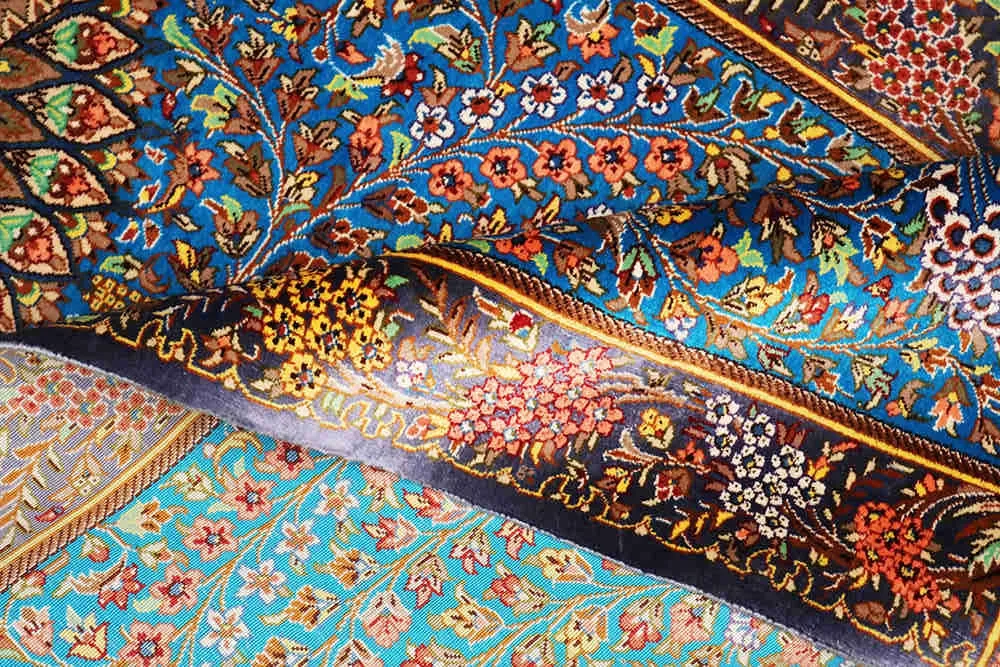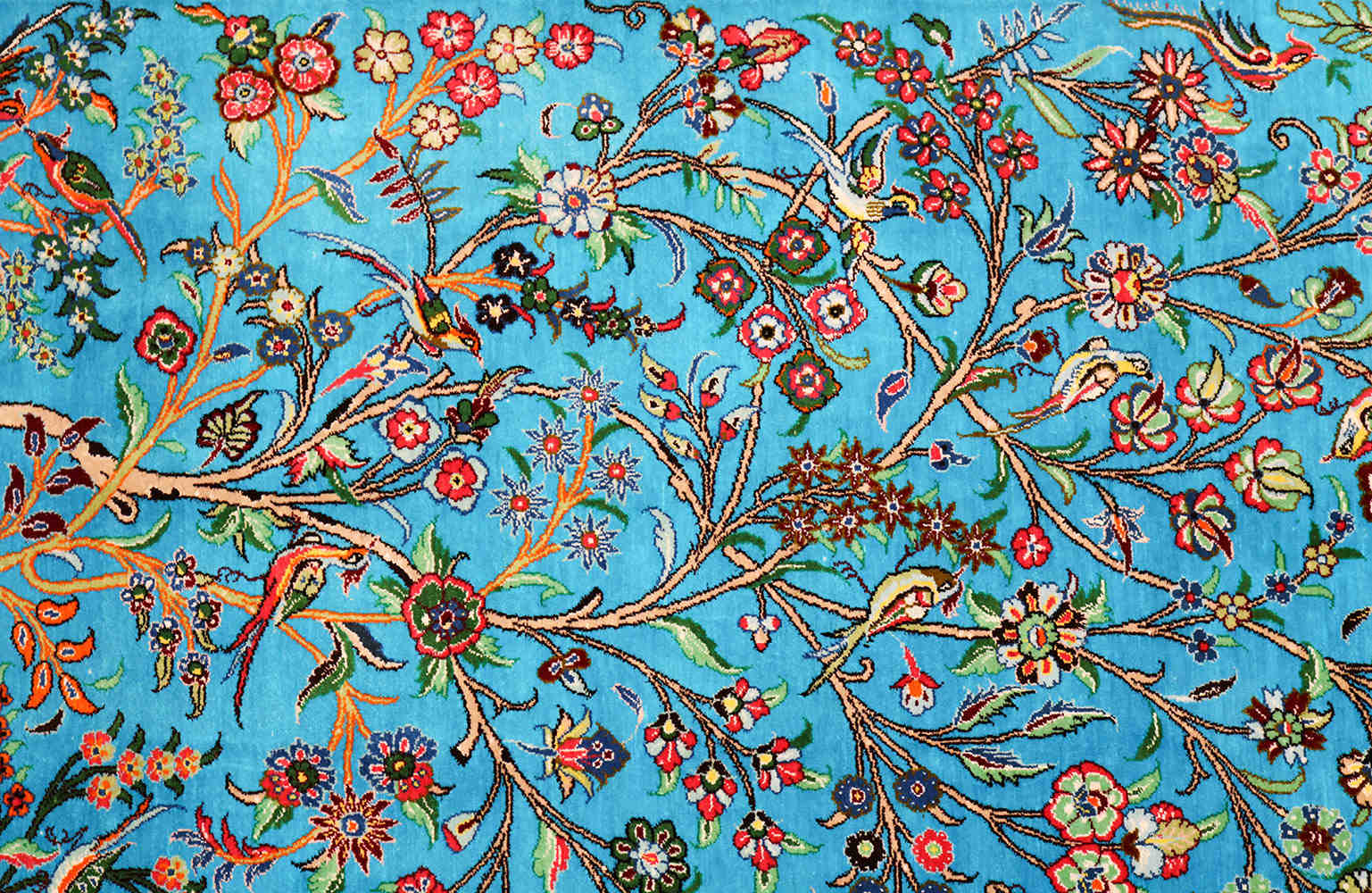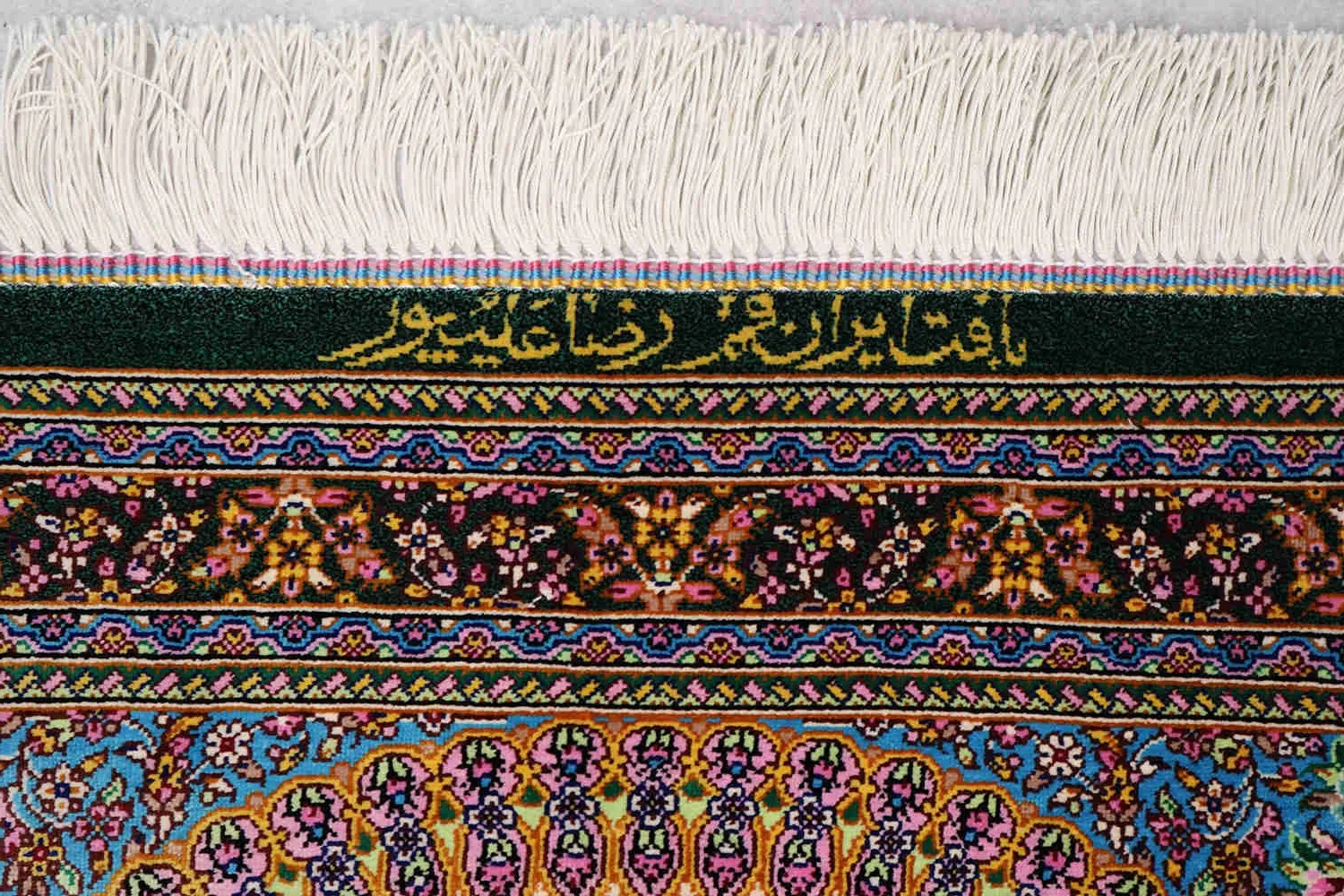Qum silk rugs are particularly renowned for their exceptional craftsmanship and deep-rooted tradition. These rugs feature a variety of designs and vibrant colors, reflecting the unparalleled skill of Qom’s artisans. Drawing on influences from other notable Iranian centers, Qom weavers infuse their creations with unique modifications, resulting in distinct and refined designs. While these carpets may bear similarities to those from Kashan and Isfahan, they are distinguished by their use of the Persian knot. The precision of knotting is even more meticulous in Qum’s silk carpets, and the use of high-quality silk not only enhances their beauty but also contributes to their eco-friendliness.

Prominent patterns in Qum Silk Rugs include: Zol Sultan Motifs, Boteh (Paisley), Tree of Life Motifs, Farangi Floral, Tile Designs (Mosaic Bakhtiari), Hunting Scenes, Mihrab (Prayer Niche) Designs, Banded Inscriptions, Moharamats, Scattered Shah Abbas Motifs, Simple Medallion Layouts, and Geometric Joushaghani Patterns. Among the designs featured in Qom Silk Rugs is the "Tree of Life" motif. This symbol has held deep cultural and spiritual significance across various civilizations throughout history. In many ancient cultures, the Tree of Life was venerated as a divine entity or a representation of a deity, symbolizing the cosmos, fertility, and the eternal cycle of life. It is often associated with the idea of eternity, with its fruits symbolizing everlasting life and the foundational essence of all living things. This timeless motif continues to be a powerful emblem of divine connection and eternal vitality in carpets.

The tree motif continued to flourish during this era, gaining increasing popularity and variety. The Tree of Life is a significant element in Persian carpets, showcased in numerous forms. From the Safavid era to modern times, these designs have evolved, featuring a range of trees such as cypress, willow, vine, pomegranate, and palm. Iranian carpets often illustrate trees in both abstract and realistic styles. They can be depicted as single trees, clusters, or integrated with human, animal, and plant motifs. The Tree of Life stands out, often depicted between figures like monks, priests, or mythical creatures such as griffins, wild goats, and lions, symbolizing a sacred and powerful presence. This motif sometimes appears as a dominant central tree flanked by smaller protective trees or guardian animals. In garden-themed carpets, the Tree of Life is intricately woven alongside various other trees and animals, including fish and ducks, creating a vivid and dynamic tableau.

A unique class of Persian rugs is identified by the weaver's signature or the workshop name woven into the carpet itself. Qum Rug Signatures serve multiple purposes: indicating the carpet's origin and authenticity, linking it to a specific weaver, workshop, or region, and helping buyers verify that they are purchasing a genuine handcrafted piece from a reputable source. Including the weaver’s signature enhances the artistic value of the rug, signifying pride in craftsmanship and adding a personal touch, transforming the carpet into a unique piece of art. A signed rug indicates higher quality, as skilled weavers and prestigious workshops are more likely to put their name on superior work, giving buyers confidence in their purchase.